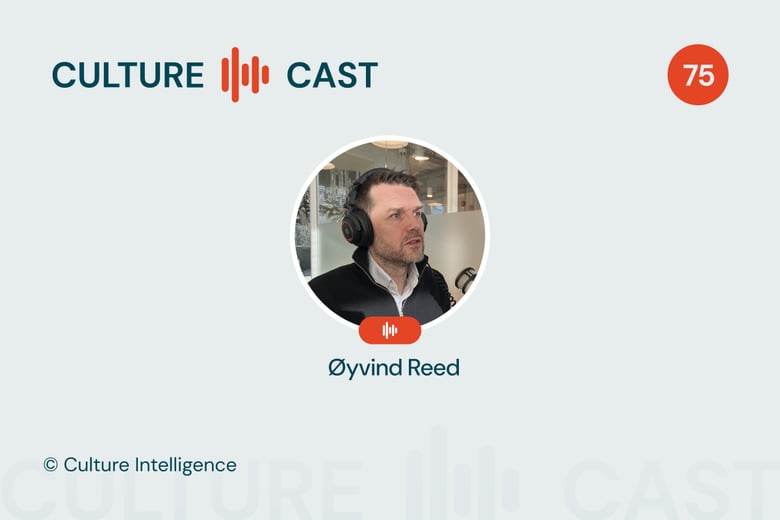In just a few weeks, the world has changed. We have a flaming coronavirus, a financial crash and falling oil prices. In very many perspectives, everything is turned on its head. We are in what we call Red Zone Culture. By that I mean that life-critical questions like “Will I get sick?”, “Do we lose our private savings” and “Will I keep my job?” find a way to our minds. These basic questions trigger values that belong to the red zone of a business culture model. Values like physical and financial survival, belonging, support and affirmation are now very important – whether it is the family, friends or work. In the red zone, we are not like we normally are. As a leader, you must be aware of the culture shift that just happened. What does it take to lead in a red zone?
Facing a diversity of new leadership challenges
Now leadership teams discuss what is happening, how to understand it and what to do about it. What are the critical actions, next week, but also for the future. They try to interpret how the financial situation will affect them, how many customers they will possibly loose and the impact this will have for the performance in their business. They are also occupied with sick leaves, infection risk and replacements, while not loosing out on employee engagement and customer support. In addition, they worry for themselves and their families. This is extremely hard, and comes in addition to normal management.
What happens in a Red Zone leadership team?
- The need for visionary thinking increases, but the ability to be visionary diminishes.
- The need for trust goes up, but the ability to trust goes down
- Timely decision making is critical, but necessary data is missing
- The battle for resources is increasing, turning into power struggles and team polarization
- Shakeup in personal needs, crafting new personal agendas and risk of manipulation
- Team values are re-prioritized, unconscious and with increasing unpredictability
In summary, this means that the leadership team is not at their best, neither in team effectiveness, nor in leading their respective people, and the organisation struggles.
What are the characteristics of Red Zone Culture employees?
- The need to engage with their leaders is increasing, the need to know what is happening, when and with whom – both today and in the future. Leaders, however, are unlikely to be able to answer these questions well right now
- The need to discuss the situation increases, to share turmoil, discuss opportunities and find out what others are doing and what they should do for themselves. This is difficult with home office and digital team hangouts
- The need to be taken care of by the company is increasing. In addition, the need to take care of one’s own family is heightened, as one is anxious and there are specific needs. In most cases, family triumphs workplace
- The best are starting to wonder if this is the best place to be right now…
An organization in the red zone is a business that experiences high uncertainty and must still operate without a complete overview of the situation. The situation is both stressful for leaders and employees. The days feel mostly like hard work.
How to conceptually understand the Red Zone?
The most basic way of thinking about culture is a sum of values priorities. Red zone is the part of a culture system where the most foundational values are located, such as security and safety. The values that define survival are generally not top of mind, since in everyday life you do not have to put priority on these. That said, they are the ones that affect us most if they are not taken care of.
As an example; if someone asked you in January what is most important between being in good physical health, or being innovative, most people at work would have replied innovation. However, if you ask people now, our data shows that more people will now reply being in good health. This illustrates what is happening now, as values shift everywhere due to the increasingly uncertain and threatening circumstances.
In order for leaders to be able to make effective business decisions now, it is crucial that they are aware of the changing mindset and re-prioritize values in their team.
So, what to do?
Today’s crisis situation requires a higher degree of awareness in the leadership role and how you are impacted personally. Effective leadership in Red Zone is to
- Address current leadership by insights about possible Red Zone indications in the team
- Have an open discussion about how to strengthen belonging, support, care and trust in each other especially when the storms are at their worst.
- Look to the company’s corporate values and culture as guides in the decision-making for the right direction, and discuss what the provide in times like these
- Engage the organization based on Red Zone reality, what are the values people now prioritize?
Common to the points above is that values and culture are best addressed when they are data driven. Mapping your culture or assessing your team will be a game changer in understanding what is going on in your team right now. Retrieve updated data rather than make decisions on the previous months, chances are some of them are really outdated. Following this insight, there is a urgent need for re-prioritization of values in order to lead the organization into a much more agile way of operation. Many teams will address culture change in an effective way and get out of the Red Zone. Some teams will unfortunately get stuck in Red Zone based on a belief that “culture is in the walls and there is not much one can do about it”. My hypothesis is that we will see an increasing polarisation in business performance going forward.



